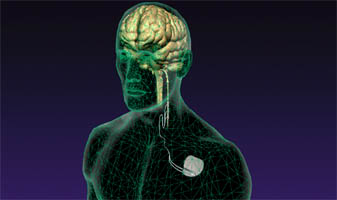The emerging use of brain stimulation treatments for psychiatric disorders.
Source
Monash Alfred Psychiatry Research Centre, The Alfred and Monash University School of Psychology and Psychiatry , The Alfred, First Floor Old Baker Building, Commercial Road, Melbourne, Victoria, 3004 , Australia.
Abstract
Objective: The aim of this study was to review the current state of development and application of a wide range of brain stimulation approaches in the treatment of psychiatric disorders. Method: The approaches reviewed include forms of minimally invasive magnetic and electrical stimulation, seizure induction, implanted devices and several highly novel approaches in early development. Results: An extensive range of brain stimulation approaches are now being widely used in the treatment of patients with psychiatric disorders, or actively investigated for this use. Both vagal nerve stimulation (VNS) and repetitive transcranial magnetic stimulation (rTMS) have been introduced into clinical practice in some countries. A small body of research suggests that VNS has some potentially long-lasting antidepressant effects in a minority of patients treated. rTMS has now been extensively investigated for over 15 years, with a large body of research now supporting its antidepressant effects. Further rTMS research needs to focus on defining the most appropriate stimulation methods and exploring its longer term use in maintenance protocols. Very early data suggest that magnetic seizure therapy (MST) has promise in the treatment of patients referred for electroconvulsive therapy: MST appears to have fewer side effects and may have similar efficacy. A number of other approaches including surgical and alternative forms of electrical stimulation appear to alter brain activity in a promising manner, but are in need of evaluation in more substantive patient samples. Conclusions: It appears likely that the range of psychiatric treatments available for patients will grow over the coming years to progressively include a number of novel brain stimulation techniques.
